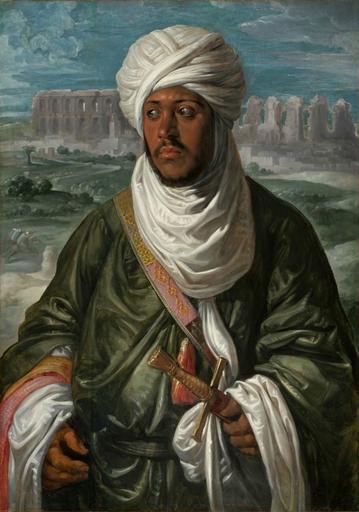MAKE A MEME
View Large Image

| View Original: | Mulay_Ahmed_de_Tunis_(Hafsid).jpg (1636x2333) | |||
| Download: | Original | Medium | Small | Thumb |
| Courtesy of: | commons.wikimedia.org | More Like This | ||
| Keywords: Mulay Ahmed de Tunis (Hafsid).jpg Artwork Creator Peter Paul Rubens after fr Mulay Ahmed de Tunis dernier sultan Hafside de Tunis en 1535 lors de l'expĂŠdition de Charles Quint Ă Tunis en 1535 1609 oil panel cm 99 7 71 5 institution Museum of Fine Arts Boston Gallery 249 accession number 40 2 object history credit line M Theresa B Hopkins Fund exhibition history en This painting is a free copy after a lost portrait by Jan Cornelisz Vermeyen 1500 1559 that was probably in Rubens's own collection Therefore Mulay Ahmad had died many years before Rubens painted him Though in fact a brutal leader the Berber King of Tunis was for Rubens an idealized exotic champion of Christianity whose image later served as a model for the Black King in several of Rubens's images of the Adoration of the Magi <br/>This painting can be identified with one of the two portraits of a King of Tunisia after Antonius Moro that are listed nos 148 149 in the 1640 posthumous inventory of Rubens's possessions Rubens's portraits of Mulay Ahmad the MFA painting and Mulay Hasan now lost were in fact made after originals by Jan Cornelisz http //www mfa org/collections/object/mulay-ahmad-32728 Museum of Fine Arts Boston <gallery>Jan Cornelisz Vermeyen - Muley Ahmed - Museum Boijmans van Beuningen jpg</gallery> PD-old-100-1923 DEFAULTSORT Rubens Mulay Ahmad Male portraits by Peter Paul Rubens Flemish paintings in the Museum of Fine Arts Boston Paintings of people from Tunisia Hafsid dynasty Jan Cornelisz Vermeyen after Near East national costume in western portraits Portraits of men with landscape Posthumous portraits Exoticism in European culture Men looking left Portraits with swords Green and white clothing Green clothing in art female Men with swords in art Africans in 17th-century art 1600s paintings in the United States Berber kings | ||||